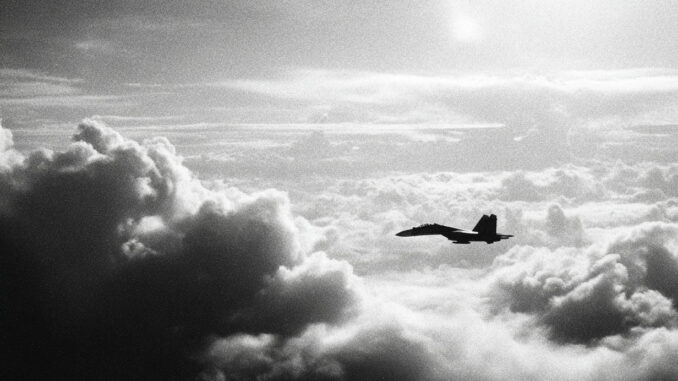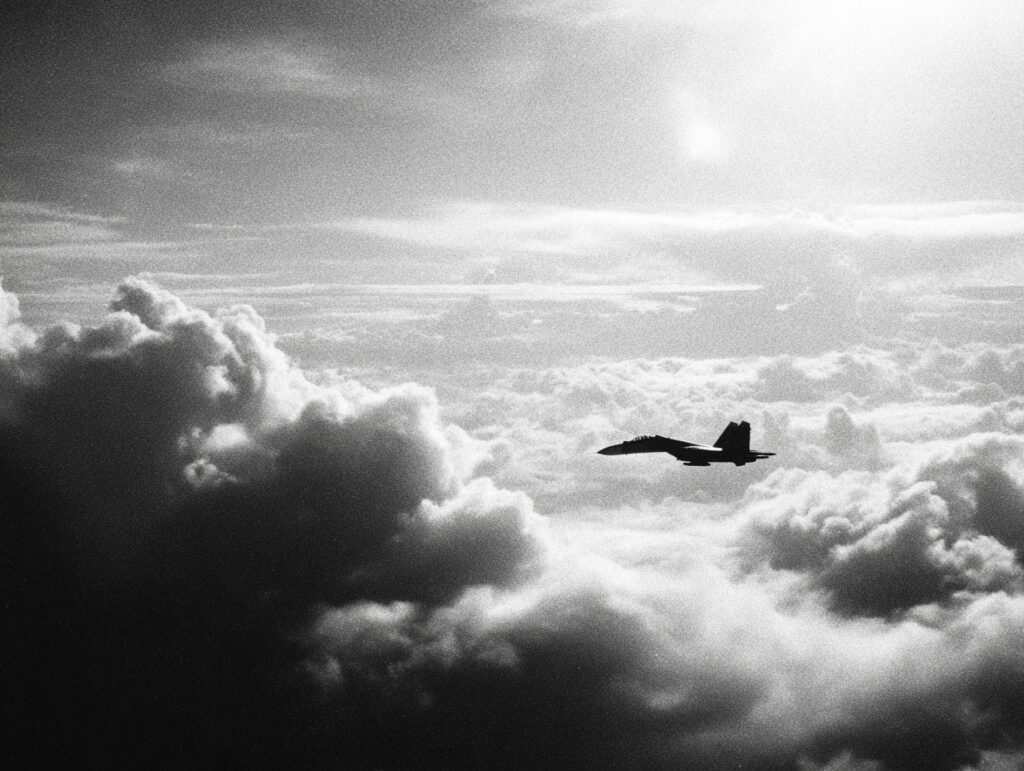
Russian aviation is suffering massive destruction in Ukraine. Aircraft losses, structural vulnerability, production under pressure: an alarming assessment.
Summary
Since Russia’s large-scale invasion of Ukraine in 2022, the Russian Air Force has suffered significant losses, including fighter jets, helicopters, and strategic aircraft. Several dozen aircraft have been shot down, destroyed on the ground, or rendered unusable, and losses continue to mount in 2025. These losses illustrate the structural weaknesses of the Russian fleet: aging equipment, risky handling, and vulnerability to Ukrainian drones and defenses. Despite production efforts, the rate of losses and the difficulty in compensating for them show that Russian air superiority is now largely contested. This observation profoundly alters the military and geopolitical balance surrounding the conflict.
The reality of Russian air losses
Since the beginning of the conflict, open—albeit partial—surveys have painted a grim picture for the Russian air force. One accessible survey reports at least 249 aircraft lost on the Russian side (airplanes, helicopters, transport, surveillance, etc.) during the war.
The details of the losses confirm strikes on combat aircraft—fighters and bombers—but also on strategic transport and surveillance aircraft: a Beriev A-50 radar aircraft was shot down in 2024 over the Sea of Azov.
In 2025, the toll rose. According to an October report, Russia had lost “nearly 250 aircraft” since the start of the war. Several recent aircraft—modern fighters such as the Sukhoi Su-30SM and Sukhoi Su-35—were destroyed in combat or damaged.
These figures are only part of the picture: the chaotic nature of the conflict, disinformation, and Russia’s lack of transparency make it impossible to obtain an accurate count. But even with caution, the number of aircraft lost remains very high—enough to call into question Russia’s air projection capabilities.
The causes of these losses: organizational criticism and military pressure
Several factors explain these significant losses.
Vulnerability to defensive systems and drones
The widespread use of drones, both tactical and strategic, is profoundly changing the balance of power. For example, in 2025, Ukrainian Magura-7 naval drones shot down at least two Su-30 fighters, marking the first time a Russian aircraft was brought down by missiles fired from a naval drone.
In addition, Ukrainian defenses—surface-to-air missiles, MANPADS, radars—are intercepting more and more Russian aircraft. Night operations, long-range strikes, and asymmetric warfare are limiting the traditional use of Russian aviation.
Ground strikes on air bases
War is no longer fought only at the front. Ukrainian strikes—sometimes using drones or precision missiles—are hitting deep air bases, including those inside Russian territory. As a result, strategic bombers have been destroyed on the ground, affecting not only combat aviation but also Russia’s ability to carry out long-range strikes.
An aging fleet and disproportionate losses
A significant proportion of Russian aircraft are old. Modernized aircraft remain few in number compared to the fleet as a whole. With the war, wear and tear is accelerating, losses are increasing, and Russia is struggling to effectively replace destroyed aircraft. Some rare and irreplaceable strategic aircraft—such as the A-50—cannot be quickly returned to service after destruction.
Pressure of prolonged war on the military industry
The Russian war effort is putting intense pressure on aircraft production and maintenance. Even though Russia is trying to produce or repair aircraft, the rate of losses far exceeds its replacement capacity. Older models, withdrawn from regular service, are being reactivated, increasing the risk of breakdowns or accidents.

Strategic impact: what these losses reveal about the current war
The decline in Russian air power has several concrete consequences.
Loss of air superiority and redefinition of control of the skies
The Russian air force initially aimed to dominate the Ukrainian skies, support ground operations, and provide logistics. But with repeated and serious losses, this superiority is crumbling. Ukraine—with its defense system, drones, and Western support—is challenging this control.
Without a sufficient number of airworthy aircraft, Russia’s strike, reconnaissance, and transport capabilities are severely reduced. Air missions are riskier, fewer in number, and freedom of action is diminishing.
Uncertainty about the ability to project power beyond the front lines
The destruction of strategic bombers and radar aircraft reduces Russia’s ability to strike beyond the immediate front lines — deep into Ukrainian territory, or even at long-range targets. The loss of a major radar aircraft weakens the coordination, detection, and guidance of strikes. This limits Russia’s strategic energy in the conflict.
Pressure on personnel and logistics
Each aircraft destroyed represents not only a high material cost, but also a loss of experienced pilots, crews, and maintenance personnel. Ultimately, this wears down human and logistical capital. Maintaining the remaining aircraft and training new crews requires increasing resources, while Russia is engaged on other fronts (ground, missiles, drones, logistics).
Tactical and moral advantage for Ukraine and its allies
These Russian losses offer a tactical advantage to Ukraine. They demonstrate Kiev’s ability to strike, defend, and inflict significant damage, even in unfavorable areas. This can influence the morale and confidence of Ukrainian forces, as well as the international perception of the viability and duration of the conflict.
The limitations of figures: why the toll remains uncertain
Despite estimates, no figure can be considered completely accurate. Several factors make it difficult to accurately assess Russian air losses.
- Many incidents do not result in any visual or independent evidence—some destroyed aircraft are not filmed and do not appear in open-source databases.
- There is a phenomenon of “over-claiming”: parties claim to have destroyed a large number of aircraft, but verification may reveal exaggerations or illusions, sometimes fueled by videos produced by video games or artificial intelligence.
- Losses due to accidents or breakdowns are sometimes classified in the same way as combat destruction, which can blur the count.
- Finally, Russia maintains a certain degree of secrecy about its actual losses, which complicates analysis.
Despite these uncertainties, the available data, even when conservative, is sufficient to demonstrate a clear trend: a very rapid depletion of the Russian air fleet, far greater than it was in 2022.
Long-term consequences for Russia and the war
The current weakness of Russian aviation could change the outcome of the conflict on several levels.
- In the short term, Russia could place greater emphasis on artillery, missiles, drones, or ground warfare, reducing its use of aviation—which radically changes the nature of the fighting.
- In the medium term, the loss of many strategic capabilities (bombers, reconnaissance, transport) could reduce Russia’s ability to conduct large-scale operations, resupply its forces, or strike beyond the front lines.
- In the long term, prolonged warfare is wearing down the Russian aviation industry: resources are being depleted, parts are in short supply, and it is difficult to train qualified pilots. If production does not keep pace, the fleet may never return to its pre-2022 level.
Furthermore, Ukrainian resistance—made possible by Western support and tactical innovations—is gaining credibility. It proves that Russia does not have the means to maintain air superiority indefinitely.
The air war in Ukraine today demonstrates an essential truth: quantity and quality do not guarantee power, especially in the face of adaptive strategy, modern defenses, and determined will. Despite its historical strengths, the Russian air force appears weakened, facing multiple fronts and under constant pressure. If this dynamic continues, Russia could lose one of its strategic pillars—and see its military ambitions profoundly reconfigured.
War Wings Daily is an independant magazine.